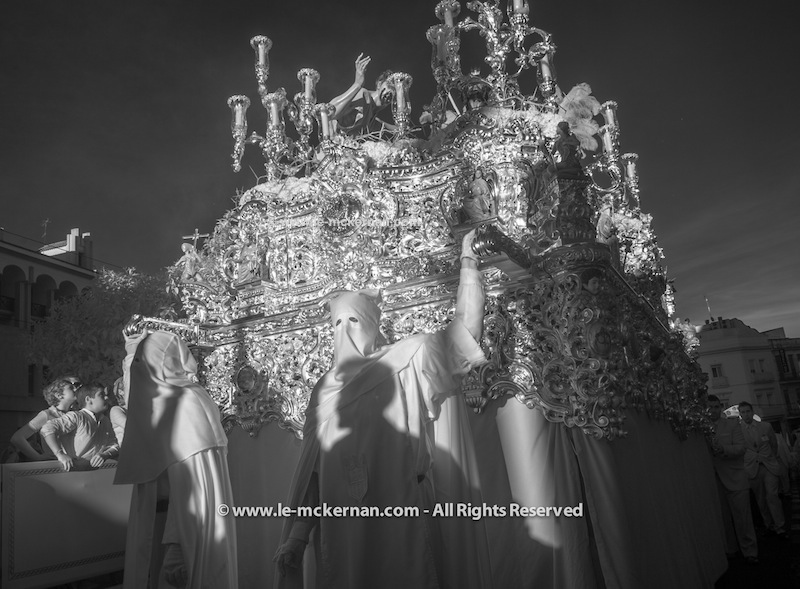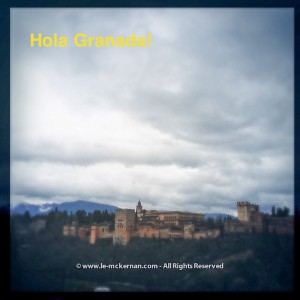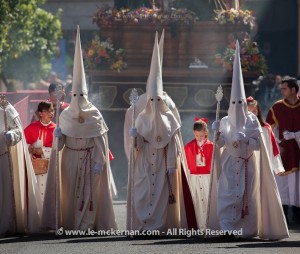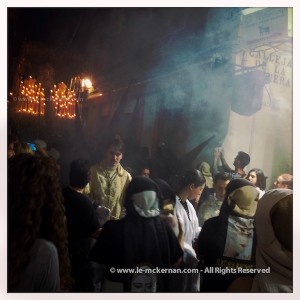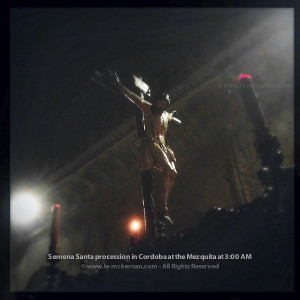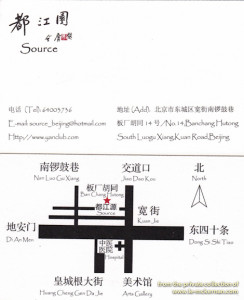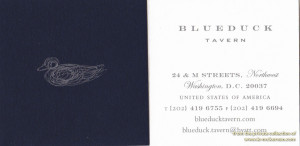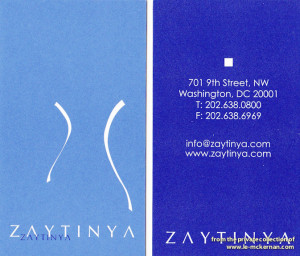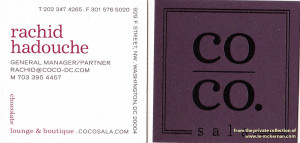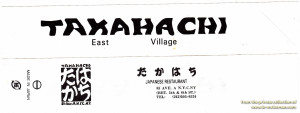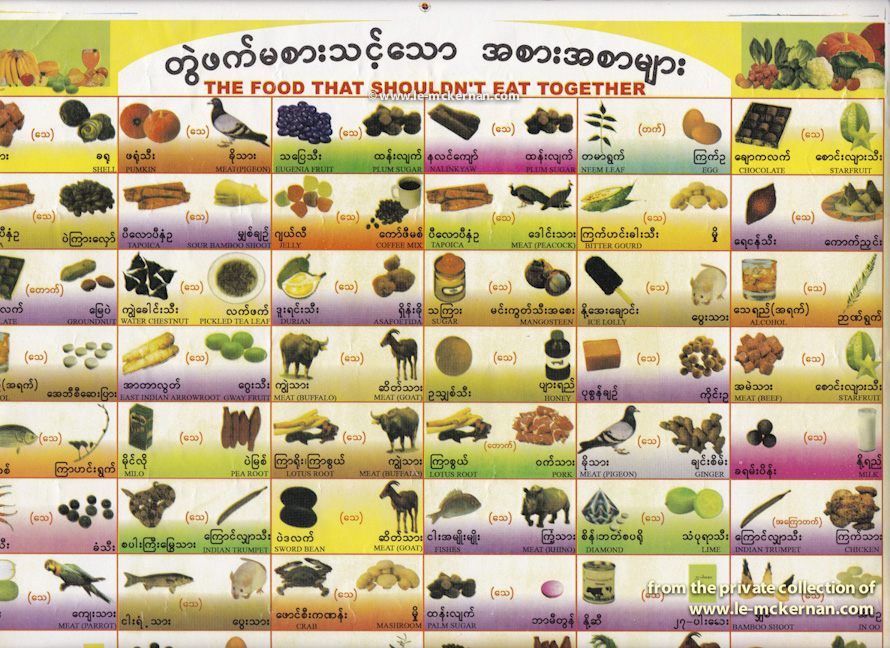Travel Blog — a month in Spain . . . .
– March 2015 –
Cordoba has long been on my travel bucket list. Unfortunately, the ordeal of a painful international hop-scotch to Andalucia from Hong Kong (via London and then to Barcelona followed by a 5-hour train ride to Cordoba) made this journey logistically infeasible. Thus, Cordoba remained a dream . . . until now — I’ve recently moved back to London and with Spain in my backyard, I am writing this blog from Cordoba!
And my first impression? Sadly, it was not positive at all! Thankfully, first impressions are only just that because my enjoyment of the city markedly improved once I got beyond the first few humps.
My first sight of the city was marred with overfilling rubbish bins and garbage strewned all over the platform at the train station. This was particularly surprising because we’d arrived a few days before the start of Semana Santa (Easter Holy Week) and this was a major event for the city. Although one could attribute this to the ongoing period of deep austerity, I did not see this amount of filth (if at all) in Barcelona, Sevilla and Granada. Prior to arriving in Cordoba, my husband and I spent many wonderful weeks meandering around the aforementioned cities and they were generally spotless.
The bigger surprise, however, was the complete lack of interest and the unhelpfulness we received at the Informacion Turistica reception! We went to the main tourist office near the Mezquita and asked one of the ladies behind the information counter for the Semana Santa procession schedule and routes. This lady, aka “The Unhelpful Cordoba Tourist Officer” told us that she did not have this information. When we’d asked where we could get this information, she told us that the schedule and routes have not yet been set and therefore was not available. This jarred with us because we could clearly see that the council had already started setting up stands along the streets. As such, we ignored the misinformation from the tourist office and went online. Using the link (http://english.turismodecordoba.org/seccion/holy-week) provided to us by our AirBnB host, we mapped out procession routes and timetable ourselves.

Negative first impressions aside, I must confess that I did truly enjoy Cordoba (and Spain) very much. The two issues mentioned above were minor irritants and minuscule compared to the mountain of wonderful food, impressive sights and warm charm of the people and country.
As alluded to earlier, main purpose of this trip was to see the Semana Santa processions in Cordoba. But, rather than do this as a fly-by-visit, we wanted to take our time and explore the key cities. To have a more authentic experience, we’d opted to avoid hotels altogether and use AirBnB accommodations situated in the centre of each city. In all but 1 apartment, we had a private kitchen. This enabled us to cook regional dishes using local produce from nearby markets. To get around, we’d expressly forbade ourselves from taking taxis (unless we had luggage and were in transit to/from the train stations). Whenever and wherever possible, our primary mode of transportation in each city was by walking.
Our slow-and-explore approach meant that we’d spent 7 nights in Barcelona (6 nights at the start of the trip and then 1 night before flying back to London), 5 nights in Sevilla, 6 nights in Granada and 12 nights in Cordoba.
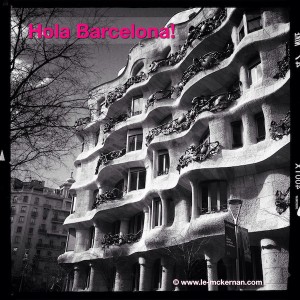
Like Cordoba, Barcelona was also on my bucket list for a long time. I had visions of Gaudi and Dali exploding in urban technicolor; as a photographer, I was chomping at the chance to capture the magic of Barcelona in infra-red. Unfortunately, the sites that I was most keen to photograph were defaced with construction cranes (at the Sagrada Familia cathedral) or with wire fences (at the rooftop of the Pedrera). Paradoxically, these eyesores were actually beneficial as they forced me to find creative angles and be inventive with my composition.
In truth, whilst I’d enjoyed photographing Barcelona, I actually enjoyed my time there more with my Nikons inside my bag. My favourite moments in Barca centered around food. We decided to forgo recommendations from the ubiquitous travel books and blogs and instead use our instincts to select places to drink and eat. I’m happy to report that we did not have one bad meal! We had traditional Catalan food (such as fideua), traditional tapas, churros con chocolate, fresh seafood from the markets, gastropub food, and a few funky artisan dishes. The standout funky dish was ‘baby sardines on filo pastry with caramelised onions … and whipped cream‘. Although this sounded deeply weird, the combination worked — the tastebuds were very happy!!! And other standout dish was veal with ‘cuttlefish noodles’ — the chef shaved the cuttlefish so thinly that the flesh curled like tagliatelle noodles! Surprisingly, however, the dish that I remembered most fondly (and plan to make often at home) was actually the simplest dish we’d had — it was toasted bread with a smear of tomatoes/tomato paste, sea salt and olive oil. We had this dish at almost every meal and never once got tired of it.
I also have very fond memories of the musicians busking by the cafes below our rented apartment. The majority were entertaining but one was simply exceptional. This musician had the whole plaza singing along with him for a full 45 minutes; the crowd would not let him leave — he had to do multiple encores. During this time, we were in our apartment enjoying our siestas but rather than be annoyed by the noises from the crowd, we accepted that we had premier seats in an open-air concert. It was wonderful!
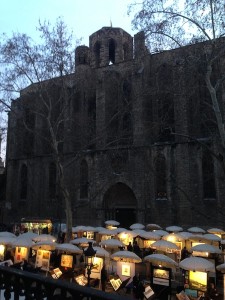
the view from our balcony in Barca
Our apartment was only minutes from the main cathedral so it was naturally the first major site we’d visited. Beautiful. Classic and traditional. Majestic. And more importantly, it served as the perfect benchmark to make comparisons with the Sagrada Familia. In other words, whilst both cathedrals can standalone in their own rights, both were also equally enriched by each other. It was a symbiotic relationship. (I would recommend that visitors see the traditional cathedral first as this would enhance their experience at the Gaudi cathedral.)

Barcelona Cathedral

Sagrada Familia
Barca was the perfect venue to re-introduce us to Spain. By the time we were on the RENFE train to Sevilla, we were completely relaxed and ready for more adventures.
[ CONFESSION: Based on my experiences with English trains, I had low expectations for the Spain trains. It was therefore a delight to find that the Spanish trains were clean and reliable and that the food (in particular, the toasted sandwiches) was actually quite delicious! ]
Train travel in Spain proved to be exceptionally easy. Prior to this trip, I’d researched the connections, timetables, etc. on an online site written by a train enthusiast (thank you Mark Smith — aka ‘The Man in Seat Sixty-One’) and used his recommendations to book the tickets online. As these were purchased in advance, they were cheaper than the daily rate travel. More importantly, it meant that we had guaranteed seats. In short, no stress whatsoever.
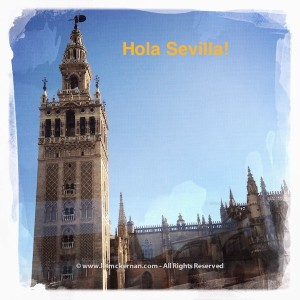
Once in Sevilla, we located our rented apartment and dropped off our bag. Our first priority was to locate el mercado – or, the local market. Even though we had maps and directions, we got lost. Frequently. Although Sevilla is often described as a “big small city”, or as a “small big city”, as an ancient city, Sevilla is crinkly and as such, it was difficult for us to get our bearings. In the end, I think it took us about 2 full days before we became comfortable enough to walk around without maps.
Our attempt to locate the market on the first day ended in failure. We therefore decided to eat out that night. Because most (non-tourist) restaurants in Sevilla do not start dinner service until 8PM, we had time to kill before dinner. We therefore decided to have a drink and walked into a tavern that had the most charm. Little did we know that we struck gold that night. The establishment that we’d stumbled upon was the oldest tavern in Sevilla (it was founded in 1670) and it oozed with a friendly old-world atmosphere. Real Iberian ham and sausages hung from the wall — these were not mere decorations — the waiters plucked the sausages from the wall and carved these to order. In addition, the tavern was full of locals whereby everyone seems to know each other. As I drank my Rioja and soaked in the lovely charm of the place, I decided then and there that I wanted to make this establishment “my local” whilst we were in Sevilla. Consequently, we visited this tavern every night that week. And each night, our experience at this tavern improved. I was genuinely sad to leave Sevilla because it meant that I was leaving this tavern. Our last night in Sevilla was celebrated with a beautiful Rioja, some great tapas, and a homemade flan that was simply the BEST flan I’ve ever had.

at El Rinconcillo, the oldest bar in Sevilla
As if finding this tavern by sheer blind good luck was not enough, we struck gold again a few nights later when at dinner we heard some commotion on the streets. It turned out that a nearby church was practicing their Semana Santa procession. I immediately jumped out of my seat (sorry Bruce!) and raced onto the street to record this short video. And I was doubly lucky because this video was recorded as the procession passed by the enchantedly beautiful Macarena.
My good luck with Semana Santa continued in Granada. In this instance, I wouldn’t described us as being ‘lost’ (because Granada was easily navigable compared to Sevilla) but we did managed to wander ‘off-plan’. During our aimless walkabout, we stumbled upon a church group that was taking their display out of storage. Never shy (especially when it pertained to photography) I got permission to photograph their Madonna. It was particularly special because I was able to get real close and I didn’t have to jostle with other tourists.
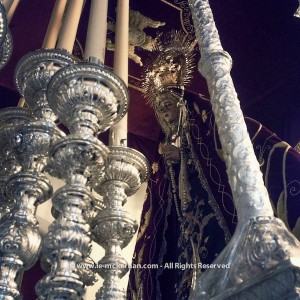
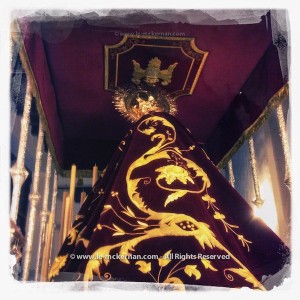
Later that week, we came across more practice processions. I’ve always known that these heavy displays needed many men to carry but it didn’t occur to me that a “medium” display would need as many as 35 men (as demonstrated in this video). It was insightful to see the men practice — not only were the men ‘beasts of burden’, but, they also had to walk in complete unison and march based on instructions barked out by their drill sergeant.
It was quite fortunate that we saw the practice session in Granada because it really made us appreciate how much effort and coordination were required. In the video below, you can see the Semana Santa team (in Cordoba) very skillfully navigate a narrow alleyway and then make an exceptionally tight corner turn. Remarkable!!!
The themes of good food (from Barcelona) and good luck (from Sevilla) continued as we moved onwards to Granada.
In my research for this trip, I had read that Alhambra has a daily limit on the number of visitors and therefore it was highly recommended to purchase tickets in advance. I assumed that this was only true during ‘peak seasons’ — i.e. during the summer months. But, I didn’t realise that the week prior to Holy Week was a high-demand time and when I went online to ‘browse’ for tickets, I was shocked to see that several of the dates were already sold out! We therefore booked our tickets quickly based on the dates that were still available. It transpired that we were lucky (again!) as the day we visited Alhambra was the only dry day of the week. For the rest of the week, it poured and poured and poured with rain.
[ A little digression here: technically, you don’t need tickets to visit Alhambra as there are some public spaces. But you do need tickets if you want to visit the towers or the palace or the famous landscaped gardens. In addition, you can visit Alhambra at night — this makes sense if you can’t get day tickets or the day temperature is too onerous. ]
In addition to purchasing day tickets, we also purchased night tickets because we thought that we would be able to see and to experience something special. To be completely honest, this was both a waste of time and money. Nothing was really open; the palace and the towers were locked. The tickets allowed us access to the landscaped garden but this wasn’t worth seeing at night. Plus, if we wanted to walk around Alhambra at night (minus the landscaped garden) then we could have entered the grounds without a ticket.
The obvious crowning jewel of Granada was the Alhambra; the other crown jewel was less obvious — ‘Los Diamantes’ was a modern bar in the centre of town that served some of the yummiest tapas we’ve had in Spain. I particularly recommend the fried baby squid and aubergine chips (with honey). [ From the street view, Los Diamantes looked like a tourist trap but surprisingly it was almost always full of locals — a very clear sign to us that this was worth a try! ] Although we’ve eaten at Los Diamantes several times during our short stay, we also took the opportunity to cook for ourselves and to buy fresh produce from the local markets. It was a delight (and quite a surprise) to find Rioja wines that normally costed us about EUR 80 to buy in Hong Kong on sale at the corner market for about EUR 8! Needless to say, we’d happily enjoyed knocking back a few bottles of our favourite brands.
Onwards to Cordoba . . . .
As much as we’d enjoyed Barcelona, Seville and Granada, it was time to hop back onto the train and head to our raison d’être. I’d timed the trip so that we would have a few days to explore Cordoba before the start of the festival. In hindsight, this was a very wise decision because it gave us the opportunity to map out the backstreets and passages which meant that if we needed to bypass or avoid a festival procession en-route, we could easily do so.
Succinctly, the Santa Semana surpassed all of my expectations. This was largely due to the fact that our wonderful AirBnB host managed to secure for us highly coveted tickets for front row seats along the main procession route. This enabled us to watch and to experience the processions unencumbered. It also meant that we were able to get great images without having to shoot over someone’s shoulders. But, in truth, I liked the fact that we experienced the festivals from both these seats as well as from the streets; in many ways, the atmosphere from the street was so very different from that from the procession seats that it often felt that we were experiencing two very different events.
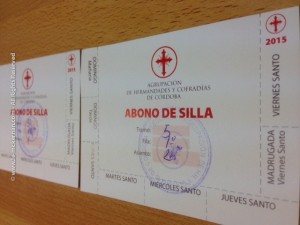
An unforgettable highlight of the festival was the 2AM procession. This procession was vastly different from the others — it was very sombre; there were no marching bands or musicians and some of the penitents walked the entire route barefooted. I had thought that this procession would have been lightly attended given the lateness of the march but I was woefully wrong. There were several hundreds lined along the procession route as the penitents slowly meandered thru the back streets of Cordoba to the Mezquita.
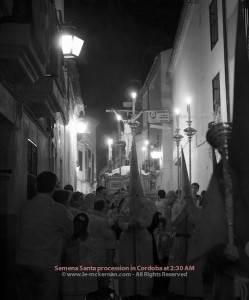
Our evenings were spent watching (or chasing) the processions. Our days were spent exploring the city, eating well and/or simply relaxing. Our rented apartment was only 2 blocks away from the Mezquita and as such, we took advantage of this proximity by exploring this iconic building multiple times in the morning. (Entry is free before 10AM; moreover, groups are banned from the morning entry — a very welcomed banned!) In hindsight, this was a smart move because it was easy to become overwhelmed by the majesty of the building at first sight. By our second and third visit, I found that I was more discriminatory in the types of images I was photographing. During our fourth and last visit, I actually spent more time with my camera in my bag as it was important to ‘drink in the experiences with my eyes and not with my camera’.
The Mezquita is a truly impressive building. (The only other building that I have found to be more impressive is the Haghia Sophia in Instanbul.) As such, I would recommend a visit to Cordoba if not for the Santa Semana festival, then at least for a visit to the Mezquita. This is well worth the effort — even if Cordoba has an extremely unhelpful and disinterested tourist officer stationed at the Tourism Desk.
I would happily spend another month in Spain again . . . .

Happy Travels …. from Tram & Bruce
March 25, 2001 | Categories: Spain, travel blog | Tags: Alhambra, Barcelona, Cordoba, El Rinconcillo, Granada, Holy Week, Informacion Turistica, Mezquita, Santa Semana, Semana Santa, Sevilla, Seville, Spain, The Man in Seat Sixty-One, travel blog, Unhelpful Cordoba Tourist Officer | Comments Off on Travel Blog — a month in Spain . . . .
Places & Things We Like . . . .
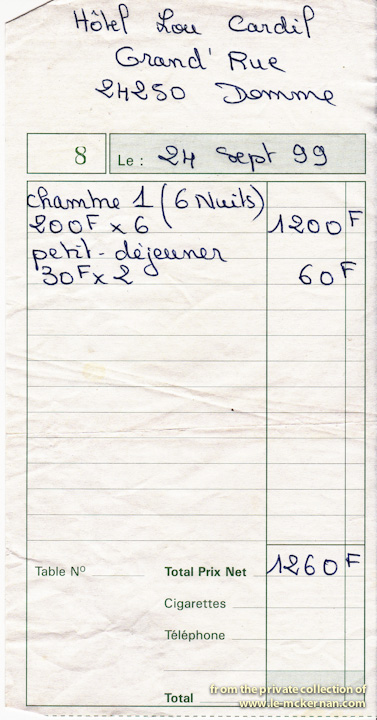
You will note that there are NO advertisements and NO sponsored links on this site. (There isn’t even a Facebook “Like” button.) This is because www.le-mckernan.com is written primarily for ourselves, our families & friends and fellow travellers. Without exception, we pay for our travels ourselves and we receive no advantages, no credits and no discounts. In short, the opinions / viewpoints/ recommendations / critiques expressed here are wholly independent.
The recommendations and comments below are based on first-hand experiences. That said, every travel situation is unique; as such, what I’ve written may or may not be applicable in all circumstances. Regardless, I hope that my reviews are helpful and that you have a safe and wonderful time exploring!
(Organised by alphabetical order of the countries.)
China:
Hotel: The Aman Summer Palace, Beijing
- PROs: location (on the grounds of the Summer Palace; as such, it meant that we had access to the grounds and thus avoided the massive queues to enter) and great service. I particularly enjoyed the day excursion to a quiet section of The Great Wall whereby we were practically the only tourists there. The hotel also arranged for a guide to take us trekking along this long stretch of the wall. It was a very special moment because this section of the wall was completely unreconstructed and therefore completely authentic.
- CONs: it’s an Aman and therefore it’s expensive!
Where to Eat:
England – London:
- Sadly, our longstanding favourite brunch place (Tom’s in Notting Hill) has closed down. As a result, our new brunch hangout is The Wolseley in Piccadilly. Although the coffee and pastries are exceptional, the real gem at this establishment is the kedgeree which really has NO EQUAL . . . . [ but one word of caution: the kedgeree can be inconsistent; sometimes it is ‘simply sensational’ and occasionally it is ‘above average’. ]
- Ffiona’s (51 Kensingston Church St.) – when I want delicious restaurant-quality food but in a quiet, cozy and friendly environment, this is the place I go. It is home to fantastic comfort food served with warmth. I am particularly very partial to Ffiona’s chicken kiev as this is just simply delicious.
- The Royal China of Bayswater — believe it or not, the dim sum here is BETTER than the dim sum in Hong Kong. Seriously. The queues here are scary so try to score the first-sittings otherwise you may face a long wait (especially during the Sunday lunch-brunch scrum).
- Yauatcha, Soho London — super posh and fusion dim sums that are delicious. Highly recommend the venison puffs.
- Bentley’s in Piccadilly for oysters and in particular, for their oyster croque monsieur.
- For great Indian food: Cinnamon Kitchen for posh Indian, Dishoom (by Carnaby or the one near Kings Cross) for seriously yummy and moderately priced Indian, and finally Khan’s on Westbourne Grove for delicious affordable Indian.
- Manti by Mike and Ollie (sadly, this is now CLOSED!!!) and Tatami Ramen (for wonderful chicken gyozas) located under the arches in Flat Iron Square off Union Street in Southwark (near Borough Market).
- Texas Joe by London Bridge does an AMAZING smoked Texan Tonkotsu ramen!!! Imagine that! This in my FAVORITE place for ramen in London and is leagues ahead of any competitors.
- City Caphe on Ironmonger Lane and Moi An on Fetter Lane for Vietnamese food (note: weekday lunch hours only)
- Pique Nique has consistency issue but it has improved in my standing after multiple visits. Famous for their tasting menu based on a Bresse chicken (I would agree!), I would also add that they do amazing French style mushroom omelettes for breakfast. (Note: it does depend on the chef — sometimes, the omelette is almost spiritually light and amazing. Unfortunately, it was also (just once) an uneventful simple and ordinary omelette.)
- For a modern spin on Mexican food, there are 2 places to try: El Pastor in Borough Market and Santo Remedio on Tooley Street. If, I had to select one of the two, then Santo Remedio gets my vote as their soft shelled crab taco is just the best. (That said, El Pastor’s sea bass tacos are only 1 small notch below the crab tacos.)
- For fine dining:
- Club Social at Tower 42 — great views and flawless food.
- Le Gavroche in Mayfair
- Dinner (Heston Blumenthal) at the Mandarin Oriental Hotel
- For more details, please see the 2017 London mini-blog.
England – Yorkshire:
- The New Inn at Tickton (near Beverley, East Yorkshire) – this is a lovely country pub that serves honest and fresh produce. I particularly like the fact that this pub sources it beef and pork from the local butcher at the Springdale Farm Shop. [ DISCLOSURE: I actually know the butcher personally and as such, I may be favourably biased. That said, I know that she (the butcher) knows exactly where the meat comes from; the butcher’s husband is the farmer! As such, if you care about the providence of your food, then you can trust the providence of the meat from the Springdale Farm Shop. ] The food at the New Inn is well cooked; the atmosphere is light and modern; the food is reasonably priced and the service is friendly — what more do you need from a country pub?
France:
Where to Eat:
- Le Lunch (Calanque, Sormiou, near Marseille) – although this establishment has very mixed reviews on TripAdvisor, we thoroughly enjoyed our lunch at Le Lunch. Perhaps it was because we were there at the end of the season and the area was absolutely quiet. Or, perhaps it was just a stunning sunny and glorious day to eat out on the deck. Nonetheless, the food seriously impressed us with its simplicity, freshness and taste. We would very happily eat at Le Lunch again and again and again.
- Le Relais des Cinq Châteaux (Vezac, Dordogne) – ah . . . this restaurant is responsible for our addiction to Gaperone cheese! We had the most amazing tasting menu at this classic restaurant and when we thought it could not be a better experience, we were served Gaperone. Ah . . . heavenly cheese to follow a heavenly meal.
- Châteaux de Fere (Fere-en-Tardenois) – the food was faultless and so was the service. In particular, what makes this a special place for me was the fact that we enjoyed the meal so much that at the last minute we decided to eat there again after a long day driving around and exploring the nearby caves. Although we were not properly attired, the staff made us feel completely welcomed and comfortable. Highly recommend their degustation menu.
- a cafe near the Abbaye Noirlac, there is a tiny (but amazing) cafe-restaurant. It doesn’t look like much, but the lunch was so delicious that we actually came back for dinner later on.
Hong Kong:
Where to Eat:
- Nan Tei (55 Staunton Street) – this is my favourite restaurant in Hong Kong. If we have family and friends and we want to take them to a place that is consistently excellent but without the unnecessary grandeur and pomp, we would take them to this wonderful and cozy Japanese grill house. It’s not fancy. It’s not posh. But the food is amazing. Must-order dishes include: lamb cutlets; salmon wrapped in bacon; asparagus wrapped in bacon; chicken wings stuffed with cheese (my favourite !!!!!).
- Yardbird – chicken and chicken and chicken. But ohhhhh so yummmmmy. I am very fond of the “chicken oyster”. And for vegetarians, I would recommend the “KFC” (which stands for Korean Fried Cauliflowers) and the mushroom risotto — both are winners.
- Alfie’s – we predominantly frequent Alfie’s for cocktails. Occasionally, we will eat there. On the whole, the food is great (but a little pricey) and I would happily recommend this establishment. However, I do have one objection and this is relates to the portion size of their steak and kidney pies. The sizes are the same for a starter portion and for a main course portion. Given that the main course is more expensive than the starter, I find this disagreeable.
Indonesia:
Hotels: Amandari (Ubud), Amanjiwo (Borobudur) and Amanusa (Bali)
- PROs: heavenly. This is The Aman at it’s best. And, where better to enjoy The Aman than in Bali? Btw: the passionfruit soufflé at the Amanjiwo is NOT to be missed!
- CONs: expensive! Also, if you do the “Bali & Beyond” package, I would recommend that you add extra days around the Amanjiwo visit to allow for travel and transit time. (We extended our Bali & Beyond package to 11 nights: 5 nights at Amandari, 4 nights at Amanjiwo and 2 nights at Amanusa. This was a wise decision because the transit to/from the Amanjiwo resort took almost a full day each way.)
Kyrgyzstan:
Hotel: Asia Mountains Guesthouse, Lineinaja 1A, City Center, Bishkek. Tel: +996 312 69 02 35
- PROs: clean, friendly staff, nice garden, good breakfast. We would use this hotel again.
- CONs: near a rail line.
Restaurant: Old Edgar (hard to find as the entrance is almost hidden, located to the west side of the Russian Drama Theatre) in Bishkek. This is a moderately priced restaurant featuring Central Asian and Russian food and is a good escape if you are tired of hotel food. Good selection of food. Friendly service. I particularly enjoyed the beetroot and herring salad. Yummmmmmy.
Market: this is actually a WARNING . . . be careful at Osh Market in Bishkek as there are corrupt police officers working the market and targeting tourists. (Pls see the Silk Road travel blog for more information.)
Mongolia:
Restaurant: Silk Road Bar & Grill (Jamiyan Guunii Gudamj, Ulaanbaatar) — oh thank you Lonely Planet for the recommendation! We almost didn’t try this place as it sounded “touristy”. But, as we passed by we noticed that lots of locals were eating there. And, we were tired and hungry and decided to ‘have a go’ . . . wise decision as the grilled lamb was soooooo lovely. (We even tried to reverse engineer the marinade once we got home!)
Scotland:
Where to Eat:
- Chez Fleming (Laggan) – Private kitchen. Reservations are nearly impossible — unless you know the owners. I’ve never had a meal that I didn’t like and I always look forward to my next time there.
- The Cross at Kingussie (Tweed Mill Brae, Ardbroilach Road) — if you can’t get in to Chez Fleming, then this is the next best thing. But, don’t be disappointed about Chez Fleming because the food here is very accomplished and the service is impeccable. In fact, I would say that the quality and execution at The Cross is better than some of the “top restaurants” in London. Every dish we had was beautifully executed and wonderfully flavoured. And it was also very reasonably priced. We ordered from the fixed menu (at GBP 55/person) and were wonderfully surprised by how much we got. The amuse bouches were delightful and the freshly baked bread was sensational. Friends recommended this establishment to us and we are so very grateful because The Cross is now on our must-visit list every time we’re in Scotland.
- The Potting Shed (Inshriach Nursery, Aviemore) — for cakes and coffee/tea. A gem of a place to stop off and have home baked cakes. I particularly love their setup — if you are lucky and can snag a seat along the viewing platform, then you will have a glorious view of the plethora of birds (and squirrels) going bonkers over the multiple bird feeders.
Spain:
Where to Eat in Barcelona:
- Elysa Y Fred (Carrer del Rec Comtal 11) – we were tired and hungry and could not find a nice ‘non-touristy’ place to eat. So, when we stumbled upon this modern and well presented restaurant, we were so happy to get a seat at the bar for a drink and light tapas. The grilled squid was exceptional. In fact, it was so good that we did a repeat visit later that week and enjoyed it the second time around. We normally don’t like repeating places, but, for our last meal in Barca, we had dinner and we were not disappointed. The salted cod checks with black rice was a wonderful (new) food sensation.
- Carmelitas (Calle Carme 42) – very modern establishment that would not look out of place in Manhattan. But it is also a very local Barca establishment — as demonstrated by the clear absence of tourists. The standout dishes were: the burrata salad; smokey grilled beetroot salad with spicy yogurt; and veal with ‘cuttlefish noodles’.
- Le Bouchon (Mercer Hotel, Calle dels Lledo 7) – we did not know that this establishment was connected with the hotel until we were seated. But once at our table, our regrets quickly evaporated. Very good tapas and service. The most memorable dish was ‘baby sardines on filo pastry with caramelised onions and whipped cream’ ….. it was a stunner of a dish!
- Bodega La Punctual (Carrer Montcada 22) – after visiting the Picasso Museum, Bruce and I were ready for lunch but we were weary about eating so close to the museum (i.e. tourist traps!). As we were leaving the area, Bruce noted that this establishment was full of ‘older Spanish men drinking wine’ and he concluded that there is a high probability of this being a decent place to eat given that it was frequented by the locals. He was wrong — it was not a decent place; it was a great place. Of all the fabulous dishes we had, I particularly enjoyed the grilled octopus.
- Caelum (Calle de la Palla)- a special mention is warranted about this establishment. Needless to say it is a fantastic cake shop. But, they also do good coffee and cheesy/marmalady morning toasts.
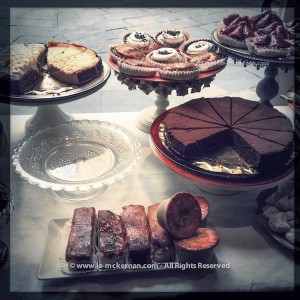
Where to Eat in Madrid:
- TriCiclo (C/ Santa Maria, 28) – the food is simply outstanding. In fact, it was so good that we became repeat offenders and eat at this wonderful establishments multiple times during our 5 days trip to Madrid. Reservations required — and is difficult to get. HOWEVER, if you arrive when the restaurant opens (8PM) then you stand a very good chance of nabbing a table at the front of the restaurant. (This is how we managed to get in on multiple occasions.)
Where to Eat in Sevilla:
- El Rinconcillo (Calle Gerona 40) – as mentioned in my blog, we’d accidentally stumbled upon this place and loved it so much that we made it our local tavern during our week in Sevilla. We did not eat at the restaurant, but instead had tapas and wine at the bar. On our last night, we treated ourselves to the homemade flan and it was the best flan I’ve ever had.
- Restaurante Contenedor (San Luis 50) – the restaurant is famous for slow cooking and for serving local produce. As such, it is very popular and reservations are absolutely necessary. While we were there, we saw the hostess/manager turn away multiple walk-in customers who were attracted to the lively and charming buzz that this restaurant oozes. Warning: the dessert portions are huge!
- La Mata 24 (Calle Mata 24, Alameda de Hercules) – a good alternative to Restaurante Contenedor (if you can’t get booking) but be advised that this one gets busy as well. We did a walk-in at 8PM and to our happy surprise, we got a table but within 30 minutes the place was packed with locals. Fresh and modern dishes.
Where to Eat in Granada:
- Los Diamantes (Plaza Nueva – across from the taxi ranks) — let’s be honest here. This establishment reeks of “tourist trap” as it is bang-center in the most touristy plaza in Granada. But yet upcoming closer inspection, it is almost always full of locals. The reason for this is that Los Diamantes is a rare gem: very very good tapas, good service and all at an affordable price. Highly recommend — and don’t let the crowds deter you. (Alternatively, go at a “quiet time” which is generally at 5PM.)
Where to Eat in Cordoba:
- Mercado de la Corredera, Puesto (Stall) 21 (Plaza Corredera) – the trick to finding this place is to ignore the outdoor seating plaza and head inside the markets. Once indoor, find Stall 21 which is located in the furtherest righthand corner. Then grab a seat or a stand if you see something available (because this place gets really busy — especially during the weekend and during a bank holiday) and then send your partner to the adjacent markets to buy fresh produce which the chef at this stall will cook for you. The principle is simple: you source the food you want to eat and you tell the chef how you want it cooked (fried, grilled, steamed, boiled or baked) and he’ll produce a simple but wonderful dish for you (EUR 3 for a large plate). And this stall sells wine and beer as well. Perfecto!!!
- Amarre (Calle Ronda de Isasa 10) – located near the Mezquita and along the river, this establishment was the perfect place to place our feet up and have a cold beer. Whilst there, we saw the staff bring out beautiful plates of food so we decided to have a bite as well; we were pleasantly surprised by the quality and freshness of the food. The standout dish was the tuna tartar on a bed of avocados accompanied by a wonderful balsamic vinegar.
- fusion by sojo (Paseo de la Ribera) – a great place for breakfast. Great location.
- Taberna Los Berengueles (de Torres Cabrera 7) – as we passed by this restaurants several nights prior, it was full of locals which piqued our interest. One night we found ourselves back in this area and although we had no reservations, we decided to try our luck getting in. We were indeed lucky as we managed to secure a table in the lovely courtyard. Very soon thereafter the dinner crowd arrived and the place was buzzing. The atmosphere was wonderful and relaxed (I loved the orange blossom scents wafting around the courtyard) and the food was good (the starters were exceptional — in particular, the pate platter and the white asparagus salad; the main course, however, was somewhat pedestrian). Although this restaurant has room for improvements, I cannot fault this place for its honest approach to food and for the friendliness of the staff.
Sri Lanka:
Hotel: The Wallawwa (www.thewallawwa.com), Colombo
- PROs: a luxurious haven (could be mistaken as a “W Hotel”) and a great launch pad to/from the airport; fantastic food! Recommend that you arrange airport transfer with the hotel.
- CONs: expensive. And bring a surge protector if you plan to charge your expensive electronics. (Our surge protector did its job properly and protected my laptop from being fried.)
Hotel: The Summerville Bungalow (The Ceylon Tea Trails)
- PROs: fantastic and idyllic location, private chef and butler service, heavenly service. (Plus: chef baked a beautiful chocolate cake for Bruce’s birthday).
- CONs: expensive
Driver: Tropical Transport ( tropicaltrans@sltnet.lk )
- Contact: Lesly David
- PROs: reliable, good quality car, no malarky. Would happily use this company again as a private taxi.
Turkey:
Hotel: Sultanahmet Palace Hotel (www.sultanahmetpalace.com) in Istanbul
- PROs: fantastic location (get the room with the view of the Blue Mosque), friendly service, good food.
- CONs: not sure any . . . at the end of the day, this is our hotel in Istanbul. First discovered this place in 2000 and have been returning to it ever since!
Cocktails:
- Four Seasons Hotel, Sultanahmet – great location and interesting building (this was previously a Turkish prison)
- Mikla (www.miklarestaurant.com) — great views!
USA – Washington, DC:
The three best meals we had in DC are from:
USA – New York City:
Restaurants:
- Takahachi — simply THE BEST place for honest and superb sushi
- Mogador Cafe and Bar, St. Marks — for phenomenal brunches and hearty Moroccan food. This is one of our all time favourite places and I can’t highly recommend it enough. (During peak hours, service could be improved, but, the food is amazing and well worth the slow-ish service.)
Cocktails: King Cole Bar at St. Regis Hotel — has a wonderful Old Manhattan (old money) charm.
. . . And FINALLY, please remember that according to the food-safety poster below, you should NOT eat fish with rhinoceros when you travel!!!
January 4, 2001 | Categories: travel blog | Tags: Abbaye Noirlac, Alfie's, Amandari, Amanjiwo, Amanusa, Asia Mountains Guesthouse, Bali & Beyond, Bishkek, Blue Duck Tavern, BlueDuck Tavern, Coco Salsa, Dordogne, El Rinconcillo, eltriciclo, Elysa Y Fred, Fere-en-Tardenois, Ffiona's, Ffiona's Kensington Church St, Four Seasons Sultanahmet, Hotel Lou Cardil, Inshriach Nursery, La Mata 24, Le Lunch Calanque, Le Lunch Sormiou, Le Relais des Cinq Châteaux, Liqun Roast Duck Restaurant, Los Diamantes, Mikla, Mogador, Old Edgar, Osh Market, Osh Market Bishkek, Restaurante Contenedor, Royal China Bayswater, Silk Road Bar & Grill, Springdale Farm Shop, Sultanahmet Palace Hotel, Summerville, Summerville Bungalow, Takahachi, The Ceylon Tea Trails, The Cross at Kingussie, The New Inn at Tickton, The Potting Shed, Tropical Transport Sri Lanka, Ulaanbaatar restaurant, Vezac, Wallawwa, yardbird, Yauatcha, Zaytinya | Comments Off on Places & Things We Like . . . .
